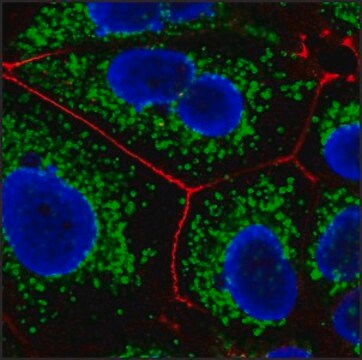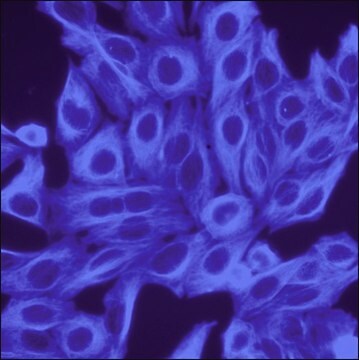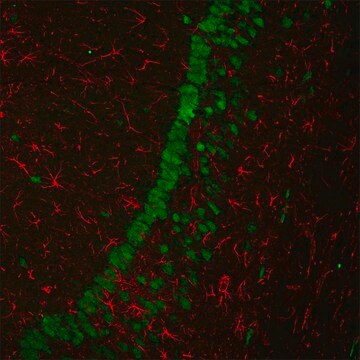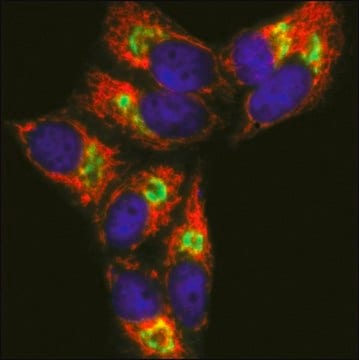General description
CF dye goat anti-mouse IgG isotype-specific secondary antibody conjugates are labeled with our exceptionally bright, photostable CF dyes. The conjugates are prepared from affinity-purified antibodies that react with Fc portion of the heavy chain of mouse IgG1, IgG2a, or IgG2b. To minimize cross reactivity, the antibodies are cross-adsorbed against other mouse IgG subclasses (IgG2a, IgG2b, IgG3), and human, bovine and rabbit serum proteins.
IgG2a (immunoglobulin G2a) belongs to the class of IgG. In mouse, IgG2a is the major serum antibody.
Specificity
Binds with the Fc portion of mouse IgG2a but not with other mouse IgG subclasses, mouse IgM, or the Fab portion of mouse immunoglobulins.
Immunogen
mouse IgG2a (H+L)
Biochem/physiol Actions
IgG2a (immunoglobulin G2a) is considered as an efficient antibody produced against viral and bacterial infections. IgG2a expression is induced by viral infection. IgG2a offers host defense through activation of complement system. This antibody has specificity towards Fc receptors expressed on phagocytes and stimulates antibody-dependent cell mediated cytotoxicity. IgG2a also induces macrophages mediated opsonophagocytosis, which has been observed in response to influenza virus and leads to its clearance from the infected cells.
Features and Benefits
Evaluate our antibodies with complete peace of mind. If the antibody does not perform in your application, we will issue a full credit or replacement antibody.
Learn more.Physical form
Supplied in phosphate buffered saline with 0.05% sodium azide, 50% glycerol and 0.2% BSA.
Preparation Note
Protect from light. The antibody solution should be gently mixed before use.
Legal Information
This product is distributed by Sigma-Aldrich Co. under the authorization of Biotium, Inc. This product is covered by one or more US patents and corresponding patent claims outside the US patents or pending applications owned or licensed by Biotium, Inc. including without limitation: 12/334,387; 12/607,915; 12/699,778; 12/850,578; 61/454,484. In consideration of the purchase price paid by the buyer, the buyer is hereby granted a limited, non-exclusive, non-transferable license to use only the purchased amount of the product solely for the buyer′s own internal research in a manner consistent with the accompanying product literature. Except as expressly granted herein, the sale of this product does not grant to or convey upon the buyer any license, expressly, by implication or estoppel, under any patent right or other intellectual property right of Biotium, Inc. Buyer shall not resell or transfer this product to any third party, or use the product for any commercial purposes, including without limitation, any diagnostic, therapeutic or prophylactic uses. This product is for research use only. Any other uses, including diagnostic uses, require a separate license from Biotium, Inc. For information on purchasing a license to use this product for purposes other than research, contact Biotium, Inc., 3159 Corporate Place, Hayward, CA 94545, Tel: (510) 265-1027. Fax: (510) 265-1352. Email: btinfo@biotium.com.
CF is a trademark of Biotium, Inc.
Disclaimer
Unless otherwise stated in our catalog or other company documentation accompanying the product(s), our products are intended for research use only and are not to be used for any other purpose, which includes but is not limited to, unauthorized commercial uses, in vitro diagnostic uses, ex vivo or in vivo therapeutic uses or any type of consumption or application to humans or animals.





